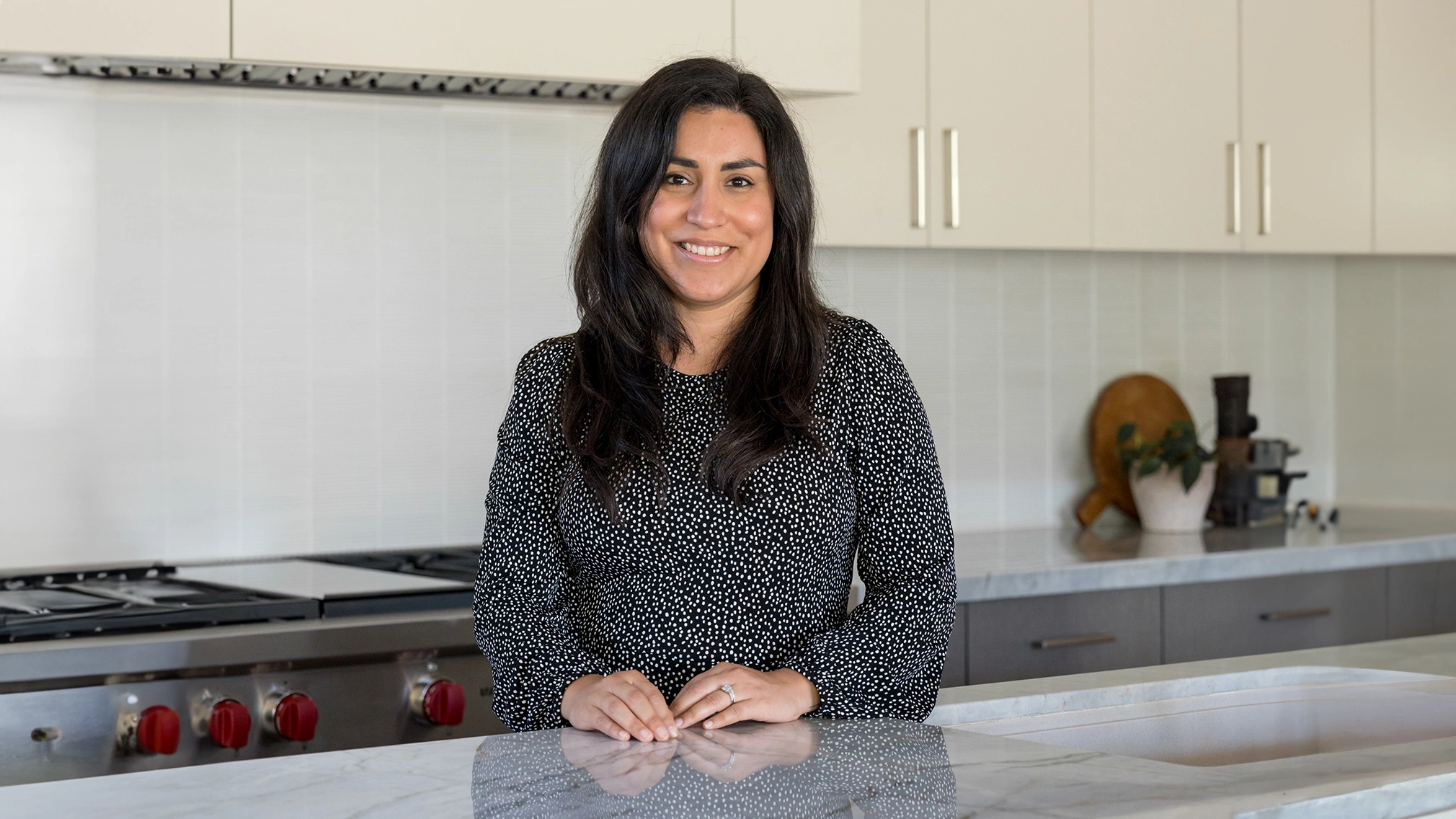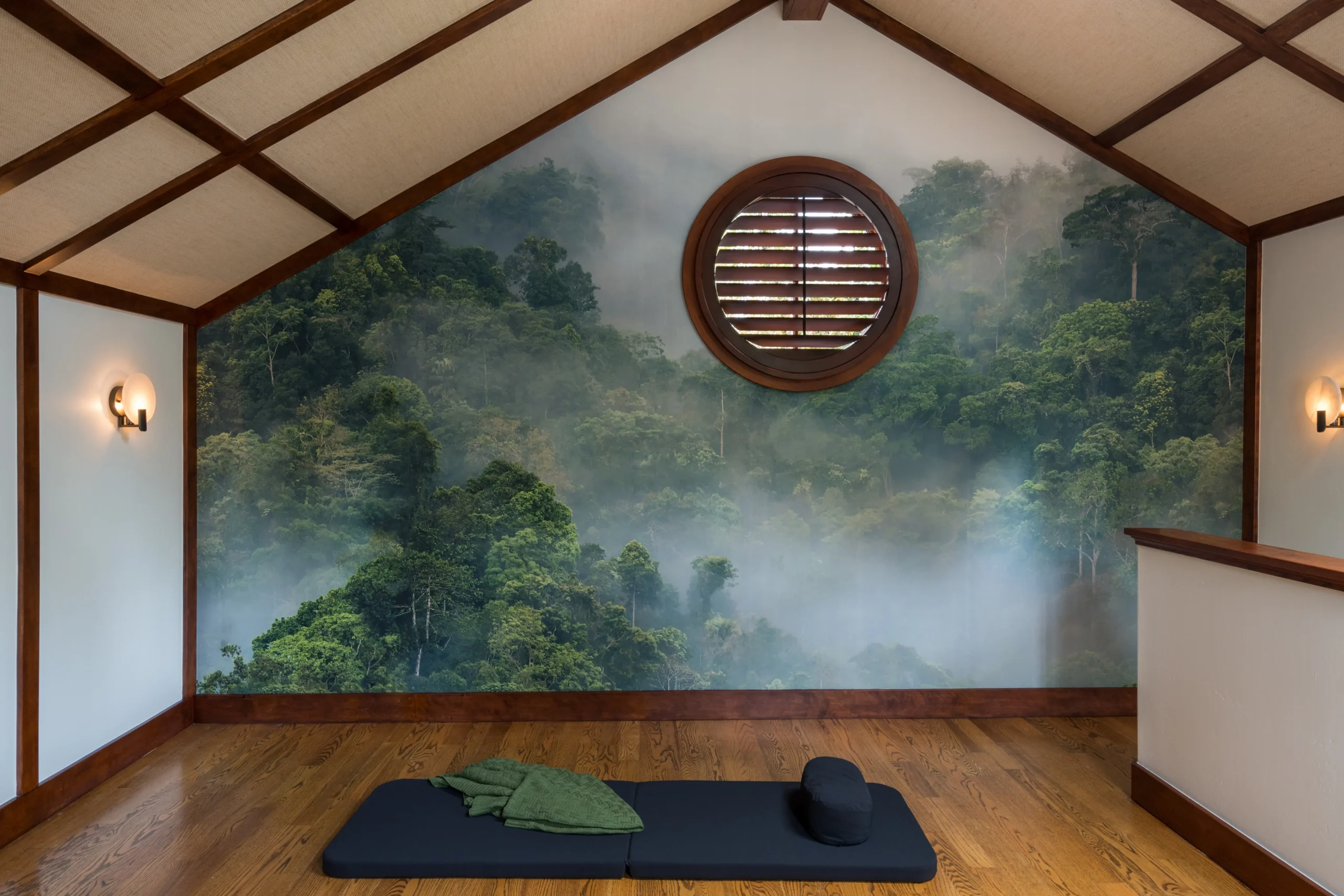
Creating a Meditation Space
Creating a Tranquil Meditation Room: Interior Design for Peace and Serenity at Home
In our fast-paced world, finding moments of peace and tranquility is essential for maintaining mental and physical well-being. A dedicated meditation room within your home offers a sanctuary where you can escape daily stresses and reconnect with yourself. From an interior design perspective, crafting such a space requires thoughtful consideration of layout, materials, and aesthetics.
Understanding the Purpose of a Meditation Room
A meditation room is more than just a quiet space; it’s a haven designed to promote calmness and introspection. The primary goals are to create an environment that minimizes distraction so it’s important to keep the space free of noise and clutter. The second priority is to encourage and facilitate relaxation so each element should contribute to a sense of peace. The design should accommodate various meditation practices, including movement, sitting and lying down.
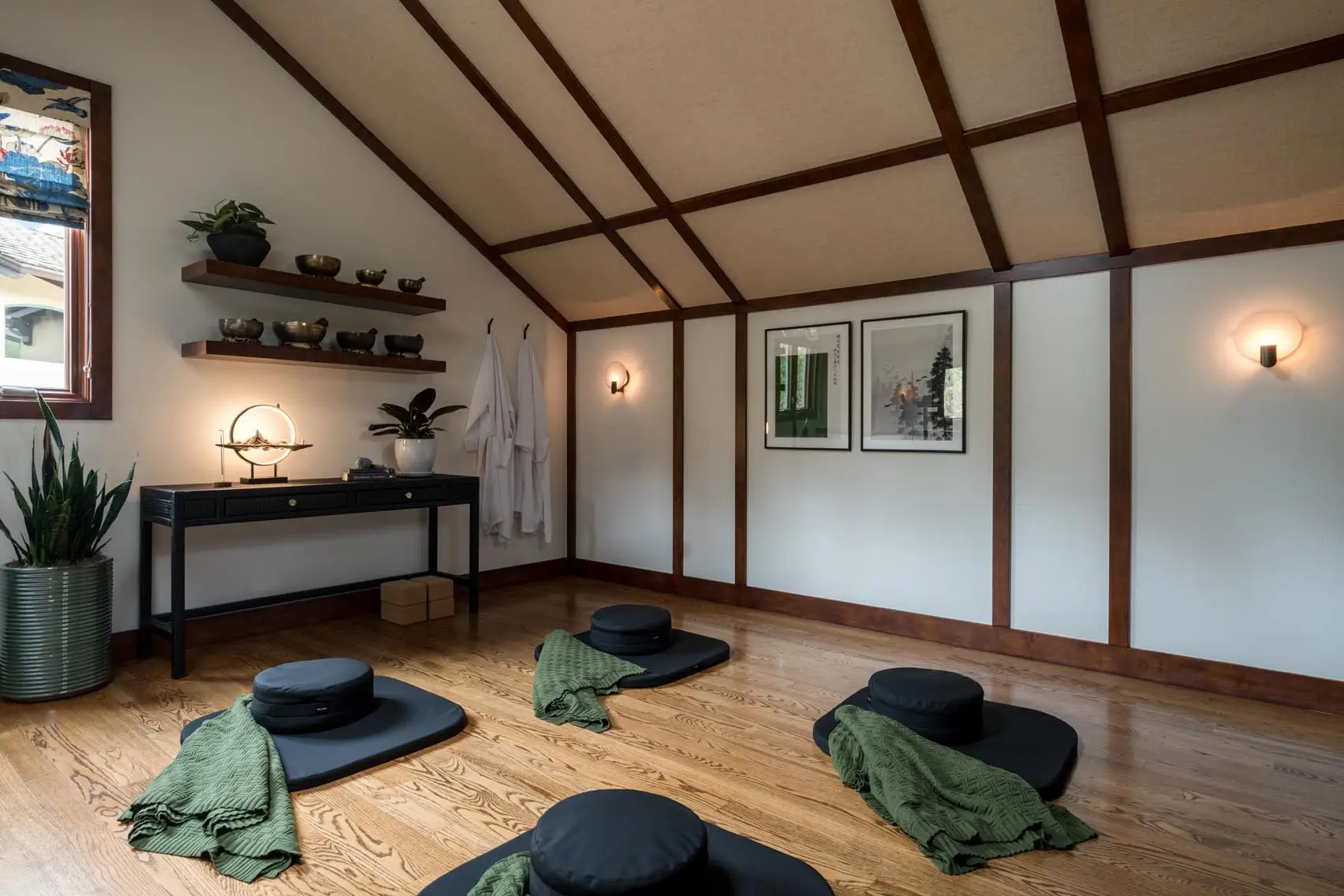
Choosing the Right Location
The location of your meditation room is crucial. Consider these factors:
Quiet Area: Choose a spot away from high-traffic areas in your home to minimize noise and interruptions.
Natural Light: Natural light is soothing and can enhance the ambiance of the room. Select a space with windows that allow sunlight to filter in softly.
Privacy: Ensure the room provides a sense of privacy, where you can meditate without feeling exposed or interrupted.
Designing the Layout
A well-designed layout maximizes the room’s functionality and comfort:
Simplicity: Keep the layout simple and uncluttered. Open space allows for free movement and promotes a feeling of spaciousness.
Focal Point: Create a focal point, such as an altar or a piece of art, to help anchor your meditation practice.
Versatility: Design the room to accommodate different meditation styles. Include space for sitting, lying down, and even walking meditation if desired.
Selecting Colors and Materials
Colors and materials play a significant role in setting the tone of your meditation room:
Calming Colors: Opt for a neutral or pastel color palette. Soft shades of blue, green, and beige are known for their calming effects.
Natural Materials: Incorporate natural materials like wood, stone, and bamboo. These elements connect the space with nature, enhancing the sense of tranquility.
Textures: Use a variety of textures to create a sensory-rich environment. Soft cushions, plush blankets, and smooth surfaces can all contribute to a tactile experience that promotes relaxation.
Furnishing Your Meditation Room
The furnishings in your meditation room should be minimal yet functional:
Seating: Choose comfortable seating options, such as meditation cushions (zafus), floor chairs, or a low bench. Ensure they provide adequate support for extended periods of sitting.
Storage: Include discreet storage solutions for meditation props like mats, blankets, and bolsters. Keeping the space tidy helps maintain a peaceful atmosphere.
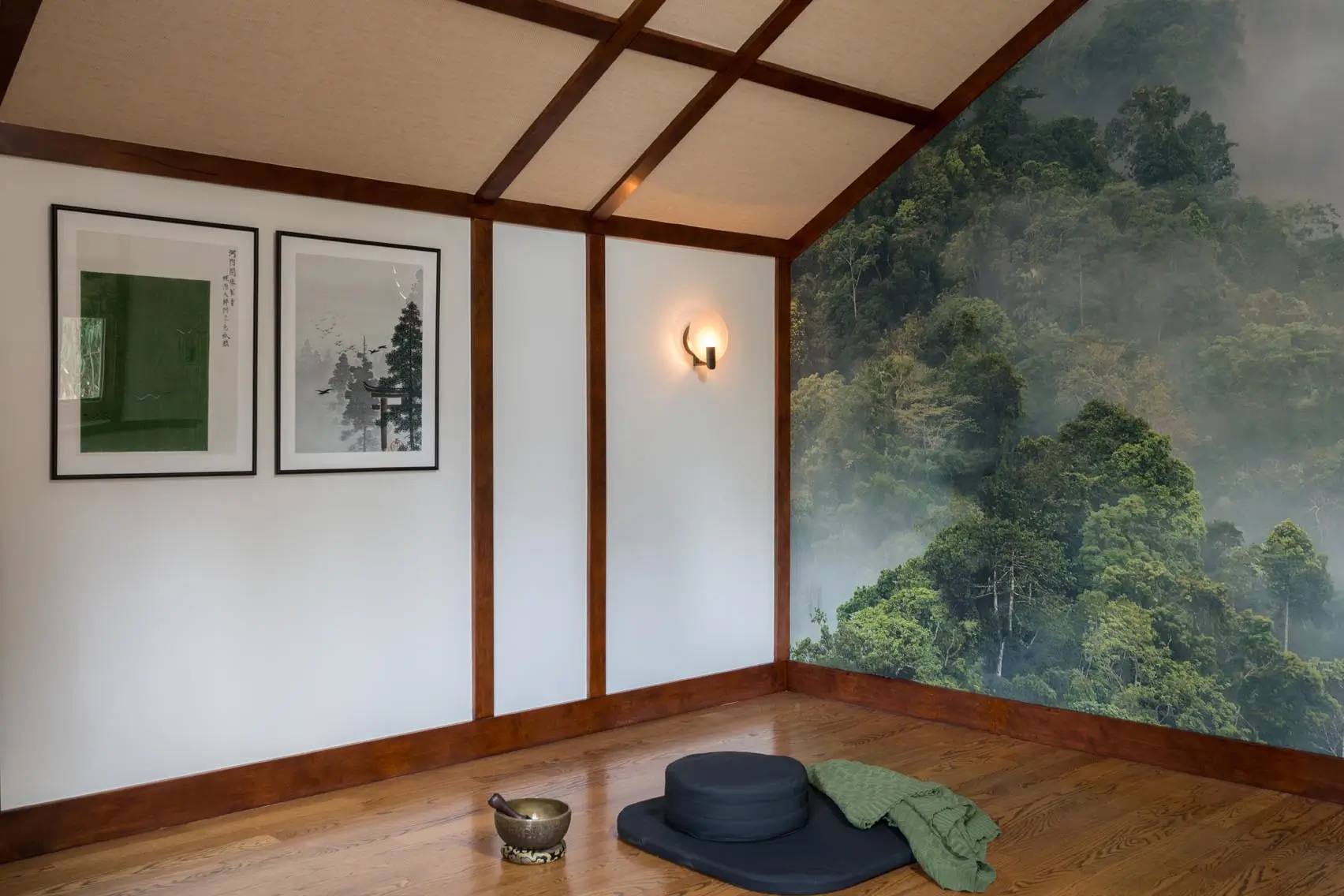
Enhancing the Ambiance
Creating the right ambiance is key to a successful meditation room:
Lighting: Soft, adjustable lighting is ideal. Consider using dimmable lights, candles, or salt lamps to create a warm, inviting glow.
Sound: Soundscapes can enhance your meditation practice. Incorporate a sound system to play gentle music, nature sounds, or guided meditations. Alternatively, a small indoor fountain can provide soothing water sounds.
Scents: Aromatherapy can deepen your relaxation. Use essential oils, incense, or scented candles to introduce calming fragrances like lavender, sandalwood, or jasmine.
Incorporating Nature
Nature has a profound calming effect and can be a powerful addition to your meditation room:
Plants: Houseplants can improve air quality and add a sense of vitality to the space. Choose low-maintenance varieties like peace lilies, snake plants, or succulents.
Natural Views: If possible, position your meditation room to overlook a garden or natural landscape. The sight of greenery can enhance your sense of tranquility.
Natural Elements: Decorate with natural elements such as stones, shells, or driftwood. These items can serve as meditative focal points and bring a touch of the outdoors inside.
Personalizing Your Space
Personal touches make your meditation room unique and meaningful:
Art and Decor: Select artwork and decor that resonate with you. This could include inspirational quotes, spiritual symbols, or calming images.
Personal Mementos: Incorporate items that hold personal significance, such as photographs, souvenirs, or heirlooms.
Custom Features: Consider custom features that enhance your practice, like a built-in bench for seated meditation or a custom-made altar.
Practical Considerations
Beyond aesthetics, practical aspects are essential for a functional meditation room:
Temperature Control: Ensure the room is comfortably warm in winter and cool in summer. Consider adding a small fan or heater if needed.
Ventilation: Good ventilation is crucial for maintaining fresh air. Ensure windows can be opened, or use an air purifier to keep the air clean.
Cleanliness: Keep the space clean and clutter-free. Regularly dust and vacuum to maintain a pristine environment conducive to meditation.
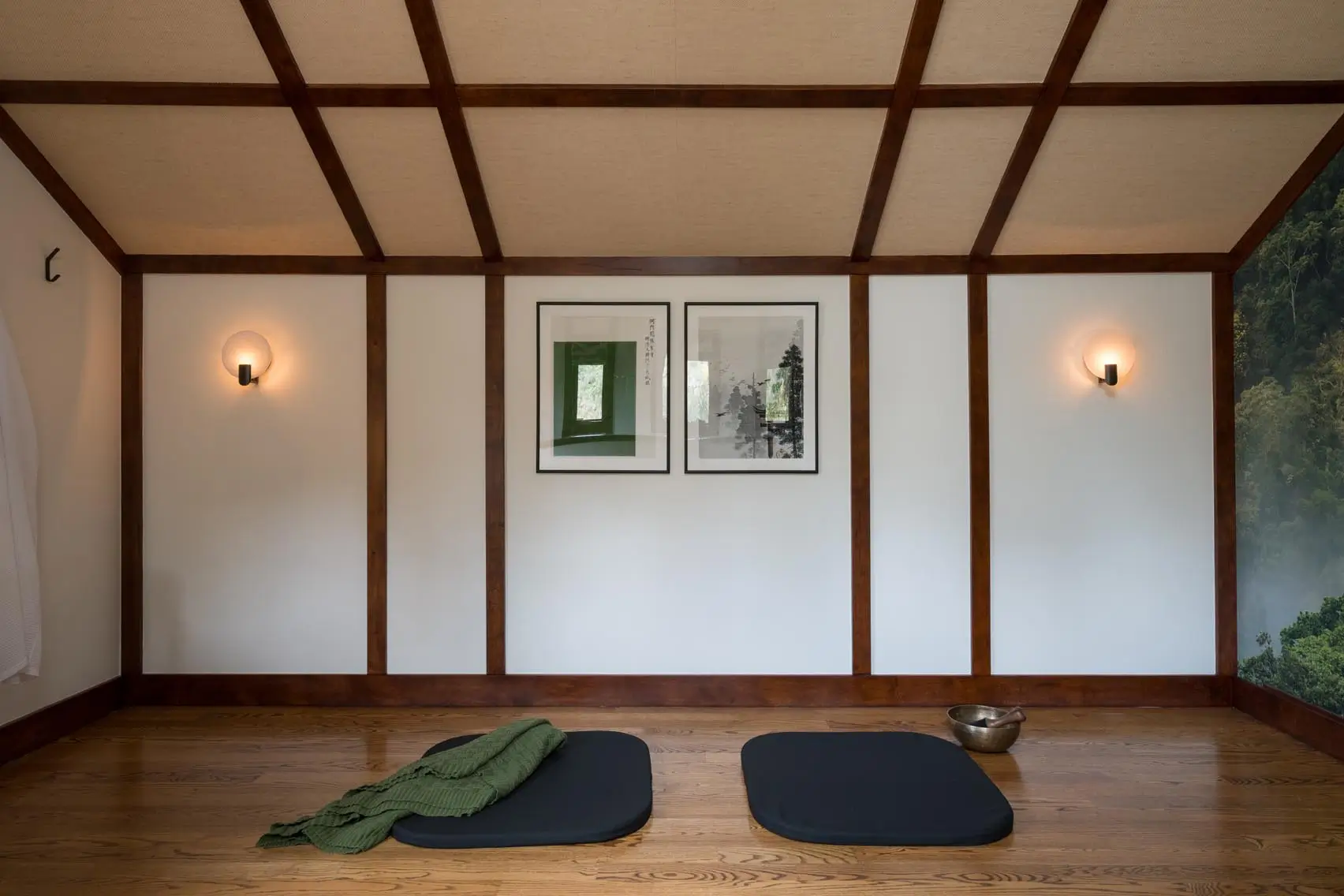
Designing a meditation room in your home is a deeply personal and rewarding project. By carefully considering location, layout, colors, materials, and ambiance, you can create a serene sanctuary that enhances your meditation practice and promotes overall well-being. Remember, the goal is to design a space that reflects your unique needs and preferences, providing a retreat where you can find peace and clarity amidst the chaos of everyday life.
Whether you are new to meditation or a seasoned practitioner, a thoughtfully designed meditation room can serve as a cornerstone of your mindfulness practice, offering a dedicated space to cultivate inner peace and serenity. Embrace the process of creating your meditation room, and enjoy the lasting benefits it brings to your mind, body, and spirit.



